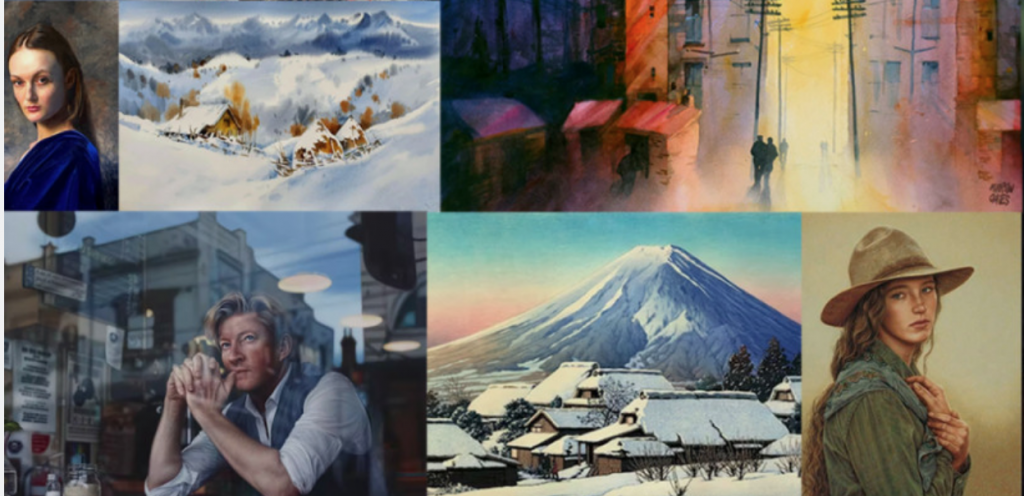
An array of non-AI artworks used to train Stable Diffusion, assembled by Waxy.org.
AI-Generated Artwork Troubles Some Traditional Art Communities for Competition, Use of Original Works
Have you noticed ? From the political world and its ” alternative facts” mindset to . See, a lot of blurred lines in our society these days.
The art world has a problem regarding the blurring of lines between original art and AI-generated art. Benj Edwards has a new piece in arstechnica.com that explains the controversy. AI has become so good at generating art in the hands of people who understand technology that real artists are worried about the future. It’s becoming difficult to differentiate human-made art from AI-generated art. And in art contests that is a pretty important matter.
The arrival of widely available image synthesis models such as Midjourney and Stable Diffusion has provoked an intense online battle between artists who view AI-assisted artwork as a form of theft and artists who enthusiastically embrace the new creative tools.
Established artist communities are at a tough crossroads because they fear non-AI artwork getting drowned out by an unlimited supply of AI-generated art, and yet the tools have also become notably popular among some of their members.
Can you blame them for the concern they have? Imagine AI being allowed to be used in baseball. Let’s say it is attached to a robotic arm. And it has the ability to throw a strike each and every time. In part that is due to its micro-second power of deduction while reviewing each batter’s history at the plate. And the AI arm can throw perfect pitches every time. Not very fair for us poor humans at the plate is it?
The voice-to-image AI has gotten so good, that perhaps it should come with a warning for underage users.
Confronted with an overwhelming amount of artificial-intelligence-generated artwork flooding in, some online art communities have taken dramatic steps to ban or curb its presence on their sites, including Newgrounds, Inkblot Art, and Fur Affinity, according to Andy Baio of Waxy.org.
In banning art created through image synthesis in its Art Portal, Newgrounds wrote,
“We want to keep the focus on art made by people and not have the Art Portal flooded with computer-generated art.”
The way these platforms are trained is with machine learning. This exposes the algorithm to millions of images. The person making art then requests an image from the algorithm and the AI goes to work searching its banks of images. Well, it turns out some real artists are not happy that their art was used to train a machine that is now in competition with that very artist. Ironic isn’t it?
Every day these creative AI tools get better and the battle between artists that use them and artists that don’t use them will continue for some time.
read more at arstechnica.com







Leave A Comment